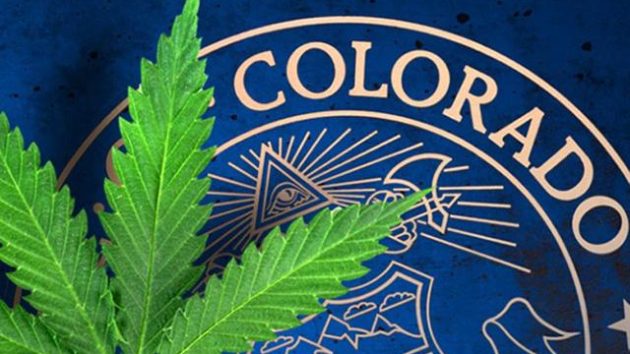Colorado Establishes Baseline for Impact of Marijuana Legalization
Warning that data is not available in most cases past 2014, the first year legal recreational marijuana was commercialized, this week the Colorado Department of Public Safety issued its first report on the impact of marijuana legalization. The report is mandated by the legislature.

In addition to the information in the Denver Post infographic from the report above, other notable findings include:
- Denver reports that burglary represents 63 percent of marijuana industry-related crime within its borders.
- Driving fatalities involving THC only or THC in combination increased 44 percent, from 55 in 2013 to 79 in 2014.
- Marijuana-related hospitalizations escalated from 803 per 100,000 in the pre-commercialization years (2001-2009) to 2,413 per 100,000 after full legalization, (2014-June 2015).
- Marijuana-related calls to poison control centers rose from 44 in 2006 to 227 in 2015.
- One survey shows 14 percent of adults reported marijuana use in the past 30 days with fully one-third of those using daily.
- Data from the Division of Probation Services finds that the percent of 10 to 14-year-olds testing positive for THC rose from 19 percent in 2012 to 23 percent in 2014, while testing positive three or more time rose from 18 percent to 25 percent over the same time.
- During the 2014-15 school year, discipline for drugs accounted for 41 percent of all expulsions, 31 percent of all law enforcement referrals, and 6 percent of all suspensions.
Read Denver Post story here. Read Department of Public Safety report here.

PY=Past Year. PM=Past Month.
NYU Cannabis Summit Unveils Stunning Information
“Americans now consume about 6,500 metric tons of marijuana a year and spend something on the order of 40 billion hours a year under its influence,” Professor Jon Caulkins of Carnegie Mellon University Heinz College, told conferees in his keynote address at the Cannabis Science & Policy Summit in New York April 17. The two-day summit was hosted by the Marron Institute of Urban Management at New York University. He argued that the change in the number of hours under the influence will be the most important marijuana-specific outcome of legalization, so it is important to understand what proportion of those hours are associated with harmless pleasure and what proportion reflect problem use.
Dr. Caulkins noted that the relatively small number of daily or near daily marijauna users dominates both use and use-related harm. About 20 percent of Americans who report using marijuana in the past year and about one-third of those who report using it in the past month say they use the drug daily or near daily. Yet together, both groups were responsible for two-thirds of the total days of marijuana use, and they used 80 percent of all marijuana consumed.
In 1992, nearly ten times the number of Americans reported using alcohol as used marijuana on a daily or near daily basis. By 2014, the ratio had fallen below 2 to 1. That’s because daily or near daily marijuana users increased 770 percent over that time.
“If we continue down a ‘regulate like alcohol’ legalization path, which allows for-profit corporations to produce, distribute, and promote marijuana, in 25 years the public health community and some of the public may be asking those of us living in 2016, “What were you thinking? Why did you think it was a good idea to create another industry whose profits depend on promoting daily and near daily use of a dependence-inducing intoxicant?”
Note: the slide above is Dr. Caulkins’ analysis of data from the 2014 National Survey on Drug Use and Health.
EDITORS NOTE: The information in this column is by National Families in Action’s The Marijuana Report



Leave a Reply
Want to join the discussion?Feel free to contribute!